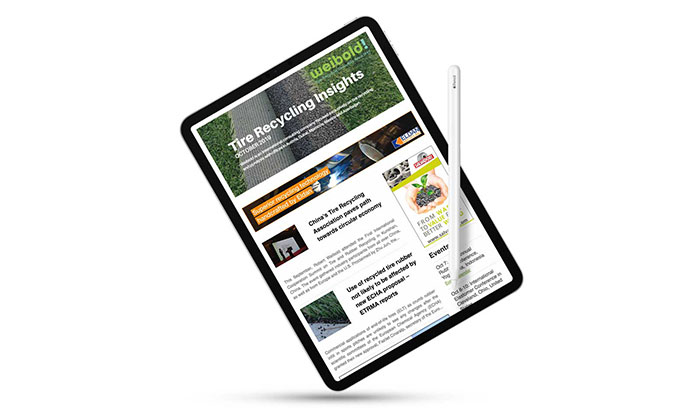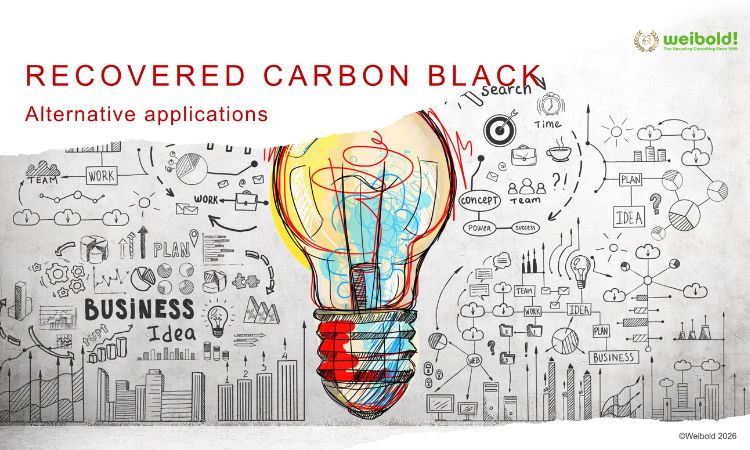Tire recycling industry on the path to the full-fledged circular economy
When you think of a circular economy, tires might not be the first thing that springs to mind. Their identities are concealed in plain sight. Every year, nearly 1 billion tires reach the end of their service life, and the consequences of discarding, hoarding, and dumping tires include fires and mosquito breeding.
End-of-life tires (ELT) are a valuable resource for the circular economy. Of course, natural rubber is important, but it only makes up roughly a fifth of a passenger vehicle's tire. Synthetic polymers, steel, and textiles all play a role in the process. Each serves a distinct purpose in tire performance and is still valuable at the end of its life cycle. However, ensuring that these components are put to good use necessitates careful planning, research, and management.
The majority of end-of-life tires have already been recovered. The next step is circularity
According to the 2019 Global ELT Management report from the Tire Industry Project (TIP), a CEO-led sustainability forum for the tire industry that is part of the World Business Council for Sustainable Development (WBCSD), the majority of ELT has already been recovered. 86% of ELT was recovered in the 45 countries studied, which account for over 80% of the world's vehicles in use. These discoveries indicate a considerable advancement in recent decades. Only 30% of the ELT was recovered in the United States 30 years ago, compared to 75% in 2019.
The tire industry keeps moving forward, and its next stop is circularity. TIP members, leaders in the tire industry, provide valuable insight into where the industry is headed. Some tire manufacturers have started rethinking the materials they utilize. In some tread compounds, Goodyear, for example, has replaced petroleum-based components with soybean oil. By 2025, Pirelli wants to employ at least 40% renewable ingredients in certain consumer tires.
Bridgestone has invested in the development of guayule, a rubber-producing plant native to the hot and dry environments of the southwestern United States and north-central Mexico, in order to achieve more sustainable natural rubber and to reduce reliance on Hevea brasiliensis — the trees that provide the world's supply of natural rubber. The Michelin Group's 2050 goal of getting all of its resources from recycled or renewable sources will help the industry move closer to circularity. End-of-life tires are also recycled by the company.
TIP members focus on improving worldwide knowledge about ELT management as a whole, understanding the necessity of research for continuing improvement (through initiatives like its state of knowledge reports). More research and innovation is needed to support the long-term management of ELT, according to tire makers, recyclers, and regulators. The United States Tire Manufacturers Association (USTMA) estimated a 20% drop in tire recycling countrywide since 2013, highlighting the importance of market development last year.
The USTMA's president and CEO, Anne Forristall Luke, said in a statement: “Three decades after we successfully eliminated 94 percent of the over 1 billion scrap tires stockpiled around the country, this report reveals that efforts to find and develop new uses for scrap tires have stalled”. She also added that “we must take immediate steps to grow new and existing markets to recycle 100 percent of scrap tires. This not only protects our health and the environment — it drives innovation and jobs.”
Rubber modified asphalt is a promising circular solution
Through study, experimentation, and activism, organizations like The Ray, a nonprofit developing net-zero roadway solutions on an 18-mile stretch of interstate highway in Georgia, are paving the way for a circular economy for tires. This year, The Ray collaborated with USTMA to investigate the environmental impacts and benefits of one end-of-life tire destination: rubber modified asphalt, a cutting-edge paving material made of asphalt cement and ground ELT that has a significantly lower carbon footprint than traditional asphalt pavement.
The Ray has already implemented rubber modified asphalt on one mile of the interstate's four lanes, which has resulted in the upcycling of almost 40,000 pounds of rubber from ELT. While testing the pavement, Allie Kelly, executive director of The Ray, says the organization is looking into prior studies, pursuing topics like: Does rubber modified asphalt really provide quieter, longer-lasting roadways that resist cracking, as researchers hope? Is it true that certain roads are better at managing stormwater? Is it possible to lessen tire wear by adding rubber?
The study found that rubber modified asphalt is a promising circular solution that reduces costs over the life of the asphalt, extends pavement life and reduces roadway noise, among other verified benefits. Recognizing the importance of ELT, the Ray is pushing for innovation throughout the tire lifetime.
The World Economic Forum believes that a circular economy "requires unprecedented collaboration". TIP's 10 member businesses are unlikely to be able to change the global management of ELT on their own. That's the beauty of TIP's knowledge-sharing approach: good practices and ideas that work should be shared. The major drivers of progress toward a circular economy for tires will be information sharing and stakeholder collaboration.
To learn more about the topic, please proceed to the original article by Yahoo! Finance.
Weibold is an international consulting company specializing exclusively in end-of-life tire recycling and pyrolysis. Since 1999, we have helped companies grow and build profitable businesses.









